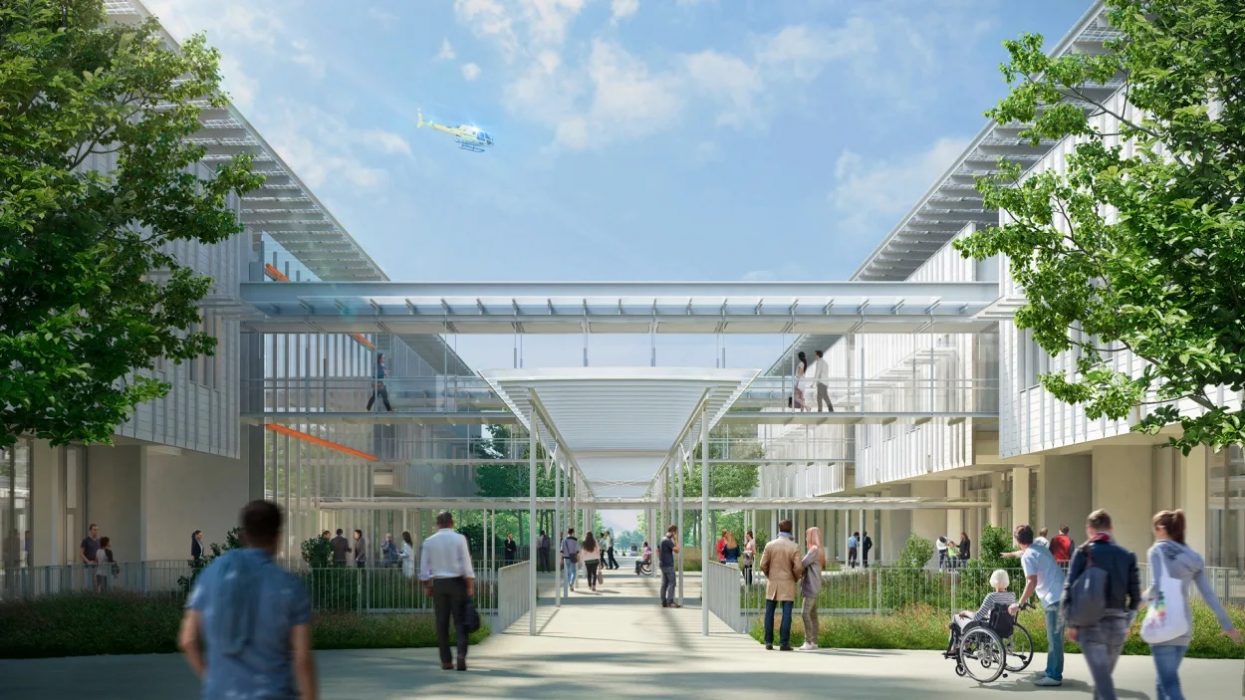The past couple decades haven’t been kind to Greece’s healthcare system, with the ongoing pandemic putting major strains on a system that was already stretched thin from the country’s financial crisis of the mid-2000s. If one needs major treatment that requires specialized healthcare, like brain surgery or for pediatric cancer, their best bet is to travel to Athens. Medical facilities elsewhere in the country have struggled to upgrade their systems, can only handle certain types of treatments, and are in dire need of a refresh.
This will change in 2025, when the country will unveil three state-of-the-art hospitals in Komotini, Thessaloniki, and Sparta that feature sustainable design elements and spaces specifically tailored for patient wellness. The $750 million project will be funded by the Stavros Niarchos Foundation Health Initiative, which enlisted Pritzker Prize winner Renzo Piano to design each hospital. Similar in shape and design, the three facilities will feature two long buildings surrounded by verdant landscapes and healing gardens, and designed with flexible floor plans that can quickly adapt to the changing demands of modern healthcare. Each structure is equipped with rooftop photovoltaics—a major plus in Greece’s hot, dry summers considering that hospitals need to run 24/7 and are prone to high energy consumption.
The three hospitals look much different than typical healthcare facilities, which evoke images of sterile, white-walled spaces outfitted with scary-looking machinery. Nonprofits like RxART are breathing life into these stark medical spaces by tapping blue-chip artists to make fantastical installations that soothe the nerves. (The latest came from Nicolas Party, whose magical forest mural makes the journey down a busy corridor at Children’s Hospital Los Angeles much less tense.) Though advocates differ on what hospital-ready art should look like, designers are embracing the idea that beautiful environments can stave off fear, adding whimsical touches like vibrant colors, slides, pools, and forested play areas to medical spaces to ease the mood.


